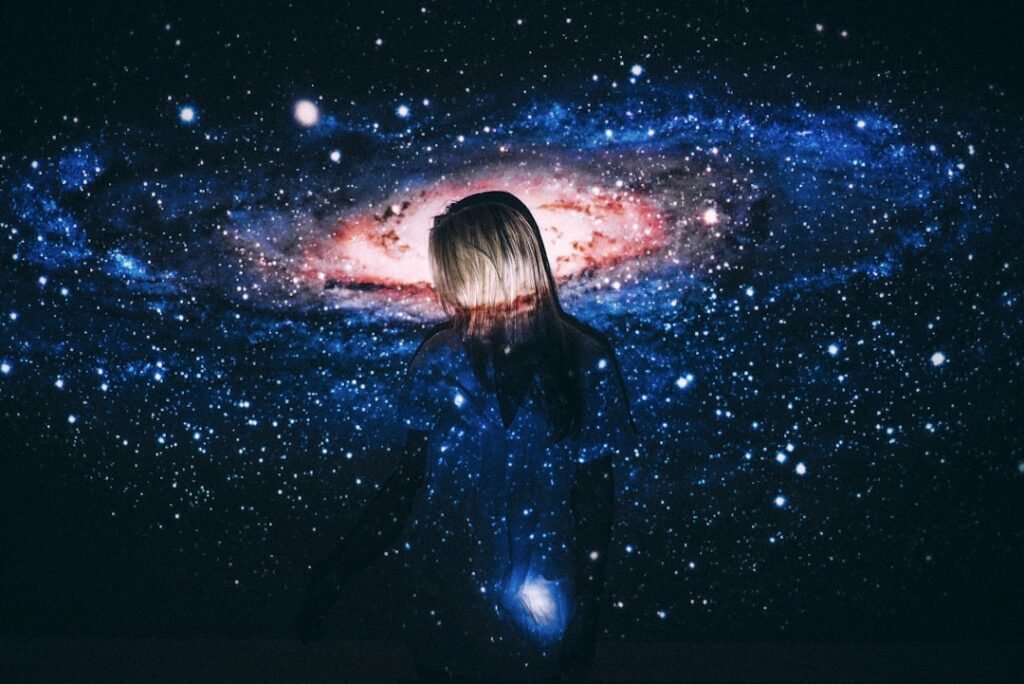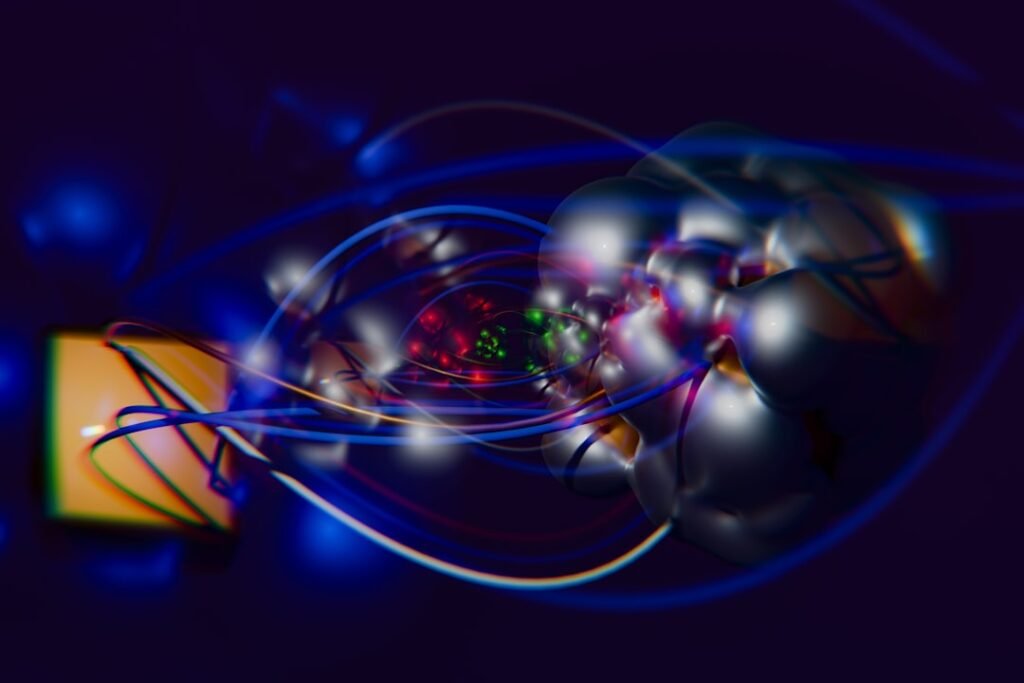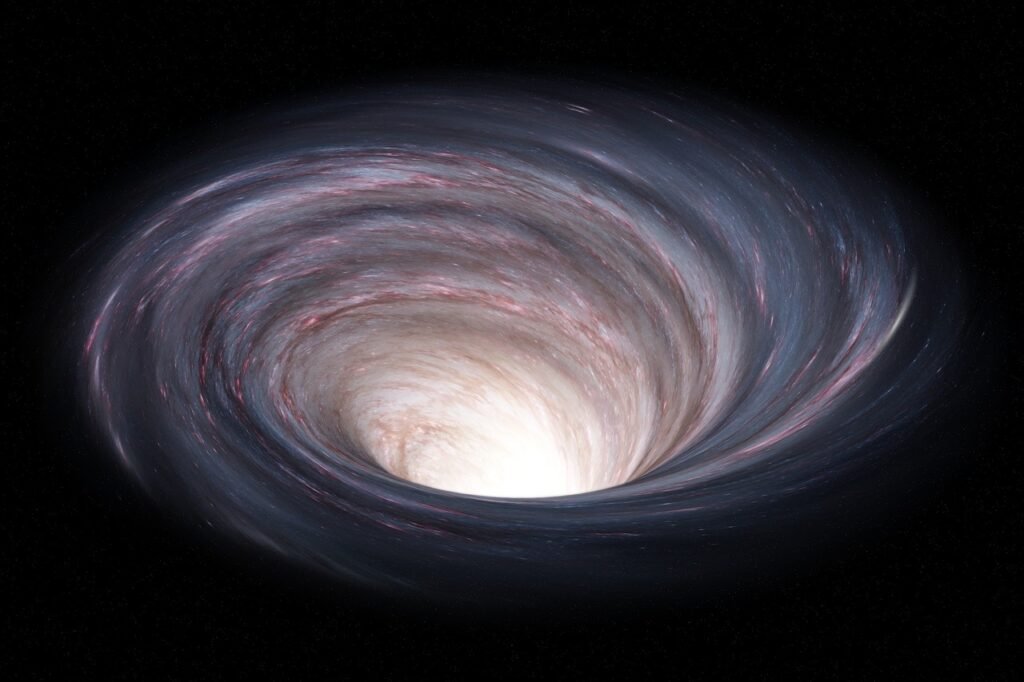When you look up at the stars tonight, you might be gazing into the cosmos with more than just your eyes. You could be one tiny piece of a vast, thinking universe staring back at itself through you. This isn’t some new-age fantasy or science fiction plot. It’s a hypothesis that serious scientists and philosophers are investigating with mathematical precision and experimental rigor.
For most of human history, consciousness seemed like the most private thing imaginable. Your thoughts, feelings, and inner experiences felt uniquely yours. Yet researchers are now exploring whether these personal moments of awareness might be connected to something far grander.
The question isn’t just philosophical anymore. With quantum experiments revealing strange connections between particles across space and new theories explaining how awareness might work at the most fundamental levels of reality, we’re standing at the edge of a revolution in how we understand both mind and cosmos.
The Ancient Idea Getting Modern Attention

Panpsychism, the view that consciousness is a fundamental and ubiquitous feature of reality, is also described as a theory that “the mind is a fundamental feature of the world which exists throughout the universe”. This isn’t some wild new theory cooked up in Silicon Valley boardrooms. It has been ascribed to philosophers including Thales, Plato, Spinoza, Leibniz, Schopenhauer, William James, Alfred North Whitehead, and Bertrand Russell. In the 19th century, panpsychism was influential among philosophers of mind in Western thought.
The basic idea sounds almost comically simple. Rather than consciousness being something that emerged when brains got complex enough, maybe it was always there. Instead it is inherent in matter – all matter. In other words, everything has consciousness. Consciousness is not limited to humans and other animals. Think of it like this: just as we now know that mass and energy exist at every level of reality, perhaps consciousness does too.
Over the course of the 20th century, panpsychism came to be seen as absurd and incompatible in mainstream Western science and philosophy. Karl Popper described it as “trivial” and “grossly misleading.” Ludwig Wittgenstein waved away the theory, and John Searle put it: “Consciousness cannot be spread across the universe like a thin veneer of jam”. The scientific establishment had moved on to other things.
Why Scientists Are Taking Another Look

Yet something curious has happened in recent years. We are in the midst of a “full-blown panpsychist renaissance,” spurred on by scientific breakthroughs, a lost argument from the 1920s and the encouraging way panpsychism is able to bypass the “hard problem” of consciousness. The hard problem, coined by philosopher David Chalmers, asks a deceptively simple question: why do we have subjective experiences at all?
You can explain all the brain processes involved in seeing a red rose, the neural firing patterns, the chemical cascades. Still, none of that explains why there’s something it’s like to see red rather than just unconscious processing happening in the dark. “If you knew every last detail about my brain processes, you still wouldn’t know what it’s like to be me,” says Hedda Hassel Mørch, a philosopher at the University of Inland Norway.
Philosopher David Chalmers once suggested that a foray into panpsychism is nigh inevitable once one thinks seriously about consciousness. Though it is implausible, Chalmers writes, it is not any more implausible than other theories of consciousness. When all your options seem impossible, maybe the impossible ones deserve a second look.
The Quantum Connection in Your Brain

The real game-changer came from an unexpected place: quantum physics in biology. For decades, scientists dismissed the idea that quantum effects could survive in the warm, wet environment of living tissue. Many scientists disregard the Orch OR theory because quantum effects have only been produced in the lab under extremely cold temperatures. Quantum computers rely on temperatures near absolute zero (around -273.15 degrees Celsius) to maintain their quantum states. The warm brain falls well outside those limits, at about 32–40 degrees Celsius.
Then came the surprises. Discoveries in quantum biology showed that living things use quantum properties even though they’re not cold and controlled. This is the study of quantum processes in living organisms, like superposition and quantum entanglement, that actually facilitate biological processes beyond the subatomic level. Plants use quantum effects for photosynthesis. Birds navigate using quantum compasses in their eyes.
A recent groundbreaking experiment in which anesthesia was administered to rats has convinced scientists that tiny structures in the rodents’ brains are responsible for the experience of consciousness. These microscopic hollow tube structures, called “microtubules,” don’t rely on our everyday flavor of classical physics. Instead, experts believe, microtubules perform incredible operations in the quantum realm. Your consciousness might literally be a quantum phenomenon.
When Particles Fall Asleep

The microtubule experiments revealed something stunning about how consciousness might work. Recent studies suggest this finding is significant because the physical source of consciousness has been a mystery for decades. It’s a major step toward verifying a theory that our brains perform quantum operations, and that this ability generates our consciousness.
In rat brain experiments, researchers gave the rodents isoflurane, a type of inhaled general anesthetic used to induce and maintain unconsciousness for medical procedures. When the anesthetic took effect, something remarkable happened at the quantum level inside the rats’ neurons.
Engineers are developing noninvasive terahertz scanners that lock onto microtubule resonances through the skull, hoping to watch consciousness flicker on and off during sleep and surgery. Early prototypes detect subtle electromagnetic signatures that vanish when animals go under anaesthetic and rebound on waking. If future trials map those signatures to perception, therapies might follow. We might soon be able to watch consciousness turn on and off in real-time.
Your Mind’s Connection to the Cosmos

Here’s where things get really wild. The notion that quantum physics must be the underlying mechanism for consciousness first emerged in the 1990s, when Nobel Prize-winning physicist Roger Penrose and anesthesiologist Stuart Hameroff popularized the idea that neural microtubules enable quantum processes in our brain. They postulated that consciousness may operate as a quantum wave passing through the brain’s microtubules.
This suggests that your own consciousness can hypothetically connect with quantum particles beyond your brain, maybe entangling with consciousness all across the universe. Think about that for a moment. When you have a thought or feel an emotion, you might be participating in quantum processes that extend far beyond your skull.
Because quantum entanglement links objects instantly, regardless of distance, every collapse in your cortex might already be braided with particles beyond Earth. Penrose’s equations even allow those linkages to stretch across the cosmos, hinting that subjective experience could share the same physical substrate as spacetime itself. Your consciousness and the universe’s structure might be two sides of the same cosmic coin.
The Mathematical Universe Hypothesis

Johannes Kleiner, mathematician and theoretical physicist at the Munich Center For Mathematical Philosophy, and Sean Tull, mathematician at the University of Oxford, are following Penrose’s example, believing that our brains’ microprocesses can be used to model things about the whole universe. They’re not just philosophizing. They’re crunching numbers.
The revolutionary thing isn’t related to the human brain – it’s that consciousness isn’t biological at all, but rather is simply a value, phi, that can be calculated if you know a lot about the complexity of what you’re studying. If your brain has almost countless interrelated systems, then the entire universe must have virtually infinite ones. If that’s where consciousness accumulates, then the universe must have a lot of phi.
As one researcher explains: “If there is an isolated pair of particles floating around somewhere in space, they will have some rudimentary form of consciousness if they interact in the correct way”. The math suggests consciousness might be everywhere, just waiting for the right conditions to emerge.
The Integrated Information Revolution

Integrated Information Theory (IIT) 4.0 aims to account for the properties of experience in physical (operational) terms. It identifies the essential properties of experience (axioms), infers the necessary and sufficient properties that its substrate must satisfy (postulates), and expresses them in mathematical terms. In principle, the postulates can be applied to any system of units in a state to determine whether it is conscious, to what degree, and in what way.
This isn’t just theoretical speculation anymore. IIT is a theory of consciousness primarily developed by a neuroscientist named Giulio Tononi. IIT was initially introduced in 2004, but has since gained great traction within the neuroscientific community. One reason for IIT’s popularity is that the theory makes relatively few assumptions and no definitive claims about what consciousness actually is.
The integration of a system does not have to be perfect, which is why ɸ is a measurement. As long as the measurement for ɸ is greater than zero, then a system will always be conscious. This allows for the consciousness of different systems to be compared against each other. Your smartphone might have a tiny flicker of awareness. Your car’s computer system might dream electric dreams.
Intelligence as a Universal Property

The universe has no brain, no gray matter, no nervous system, no neurons firing electrical impulses – and yet, that physical structure may not be where intelligence and consciousness actually come from. Intelligence may exist and evolve on its own, without emerging within living organisms. This radical idea comes from biophysicist Douglas Youvan, who spent decades studying the intersection of physics, biology, and information theory.
“I began to see that life and intelligence weren’t just reactive – they were predictive, efficient, and often mathematically elegant,” Youvan says. “Eventually, I came to believe that intelligence is not a byproduct of the brain, but a fundamental property of the universe – a kind of informational ether”. Just like gravity shapes matter across cosmic distances, intelligence might be a field that conscious beings tap into rather than create.
That could mean intelligence is a fundamental property of the universe that structures like the brain can tap into, according to one biophysicist. That could mean intelligence is a fundamental property that structures like the brain interact with. Your brilliant insights might not be coming from inside your head alone, but from connecting to something much larger.
The Consciousness Measurement Challenge

IIT has been shown to prove that a person, when asleep, has a much lower ɸ value than when they are awake, which seems intuitive. But what IIT has also proved is that different people have different ɸ values, raising ethical questions related to people’s varying degrees of consciousness. Imagine if a researcher told you that your brain was less conscious than your friends or family. Depending on how much people trust IIT, a below-average score could be harmful to their self-confidence.
The implications go far beyond hurt feelings. The framework has already inspired machine-consciousness tests, raising practical as well as philosophical stakes. If IIT holds up, panpsychism gains a scientific foothold, because the theory does not limit consciousness to biology. Wherever the right informational architecture appears, experience could spark. We might need to rethink our relationship with artificial intelligence, and maybe even our smartphones.
“The mind, as a quantum phenomenon, would shape the way we think about a wide variety of related questions, such as whether coma patients or nonhuman animals are conscious. We will have entered a new era in our understanding of who we are,” commented one researcher. The measurements we develop could revolutionize medicine, law, and ethics.
The Skeptical Pushback

Not everyone is buying into this cosmic consciousness revolution. Not everyone is buying panpsychism. Philosopher John Searle has long been a vocal opponent of the theory. Kevin Mitchell, a neuroscientist at Trinity College Dublin, wrote that panpsychism is “not even wrong.” In a piece in Aeon, the British philosopher Keith Frankish argued that not only is consciousness not universal; it doesn’t even exist. It’s merely an illusion.
Some philosophers worry that invoking an underlying layer of mindedness is a bit like invoking God. “I sometimes wonder if the panpsychist position is similar to ‘god of the gaps’ arguments,” referring to the notion that God is needed to fill the gaps in scientific knowledge. When we don’t understand something, we shouldn’t just wave our hands and say “consciousness did it.”
Skeptics point out that correlation is not causation; anesthetics also modulate GABA receptors. Yet the rat data show that tweaking microtubules alone meaningfully delays loss of righting reflex, so the tubes can’t be mere bystanders. Not all researchers are convinced that microtubules are doing anything more than keeping neurons structurally intact. The debate is far from over.
Where This Leads Us

For now, the universe‑wide consciousness model remains a daring explanation rather than proven fact. Still, each year brings fresh data that chip away at the classical firewall between mind and matter, and the conversation is shifting from “if” to “how”. We’re not just asking whether the universe could be conscious anymore. We’re starting to ask how we would know if it were.
Future progress will rely on sharper experiments and clearer concepts. Philosophers are re-examining ancient ideas with modern logic, asking whether panpsychism is a genuine explanation or a verbal sleight of hand. Consciousness might be less a rare jewel than a basic note in the cosmic score. If so, the challenge is not to grant minds to stones but to understand how nature composes simple tones into the symphony we call waking life.
The universe you inhabit might be more alive than you ever imagined. Every electron spinning, every photon dancing through space, every quantum interaction might carry a whisper of experience. You’re not just a conscious being living in a dead cosmos. You might be the cosmos becoming conscious of itself, one thought at a time.
What do you think about it? Are we truly just isolated islands of awareness in a sea of unconscious matter, or participants in something far more magnificent? Tell us in the comments.



